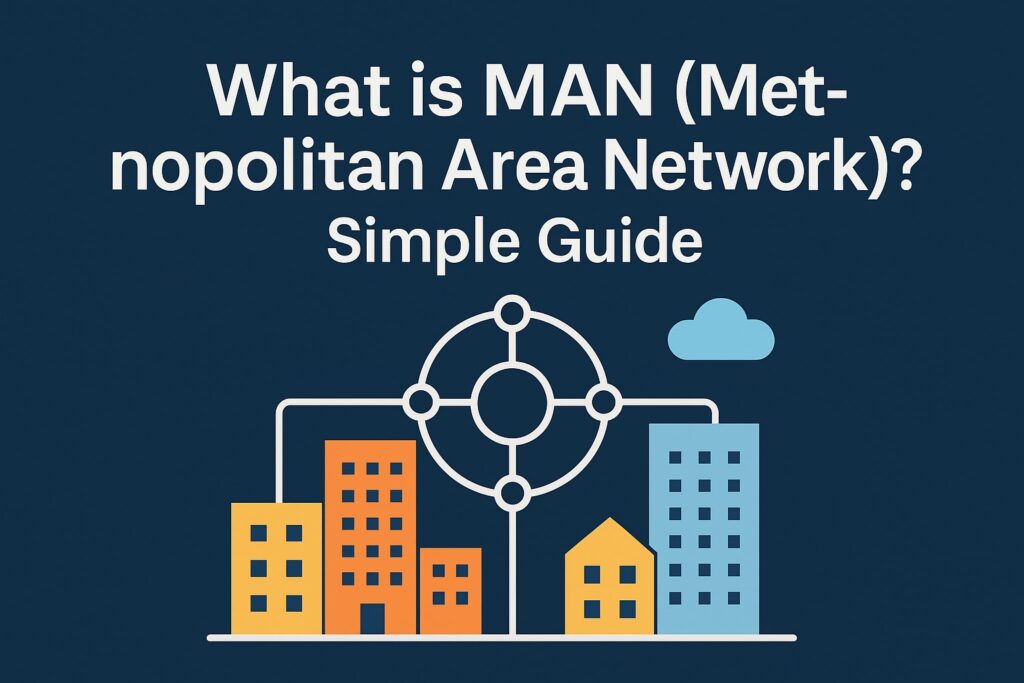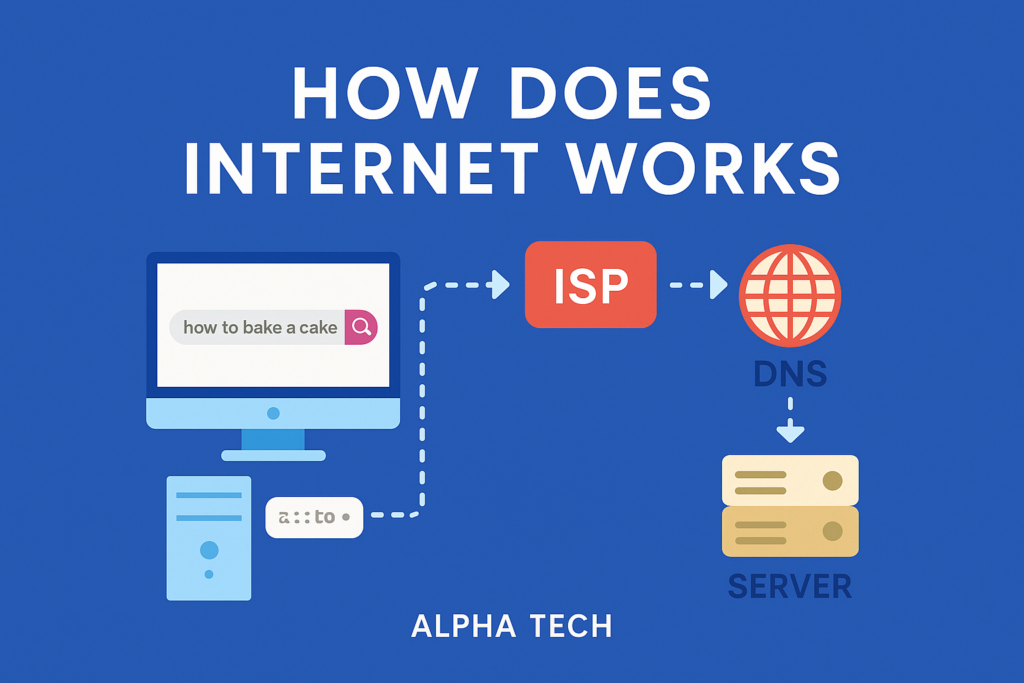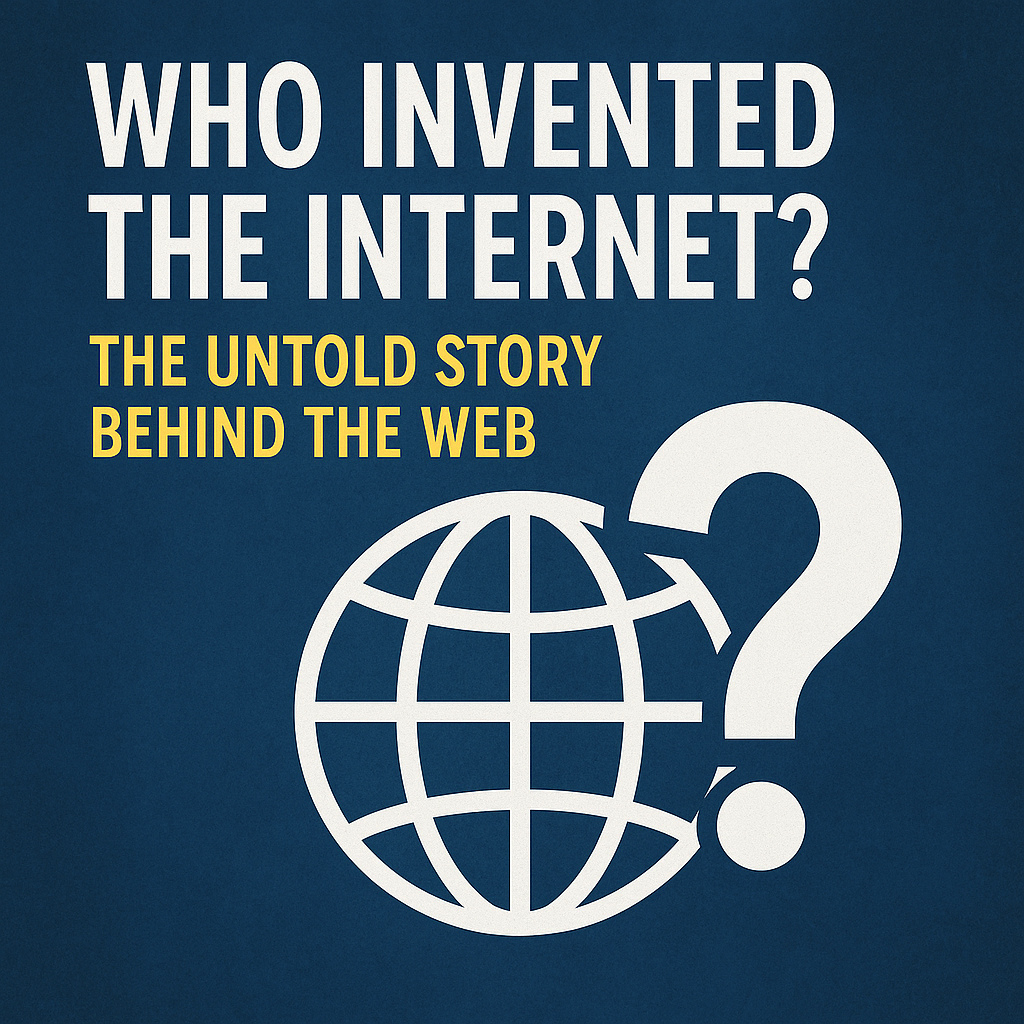Introduction
MAN In today’s digital world, computers and devices don’t work alone. They are connected to each other through what we call computer networks. These networks allow data to be shared quickly, whether it’s a message, file, or video. From home Wi-Fi to the internet, networks are what keep everything linked and working smoothly.
There are mainly three types of computer networks based on the area they cover:
LAN (Local Area Network), MAN (Metropolitan Area Network), and WAN (Wide Area Network).
In this blog, our focus is on MAN, which is used to connect multiple locations within a city or large urban area. Think of it as a bridge between smaller local networks (LANs) in different buildings or areas of the same city. Whether it’s government offices, universities, or large organizations with multiple branches, MAN makes fast and reliable communication possible within a metropolitan area.
Understanding how MAN works is useful not just for IT professionals, but also for students, tech users, and businesses. It helps in grasping how data moves across cities, how institutions stay connected, and how modern communication systems are built.
What is a MAN (Metropolitan Area Network)?
A MAN, or Metropolitan Area Network, is a type of computer network that connects multiple local networks (LANs) within a large city or metro area.
You can think of it like this: imagine several branch offices of a company located in different parts of a city. A MAN helps connect all those offices together so that they can share data and resources quickly and easily — just like they’re in one big office!
=> Coverage Area
A MAN covers a larger area than a LAN (Local Area Network) but is smaller than a WAN (Wide Area Network).
- LAN = inside a building (like your home or school)
- MAN = entire city or a group of nearby buildings
- WAN = across countries or continents (like the internet)
=> Example Scenario
Suppose a university has campuses in different parts of the city. Instead of setting up separate networks in each campus, they can use a MAN to link all campuses. This makes communication faster and more efficient for students and staff.
Key Features Of MAN
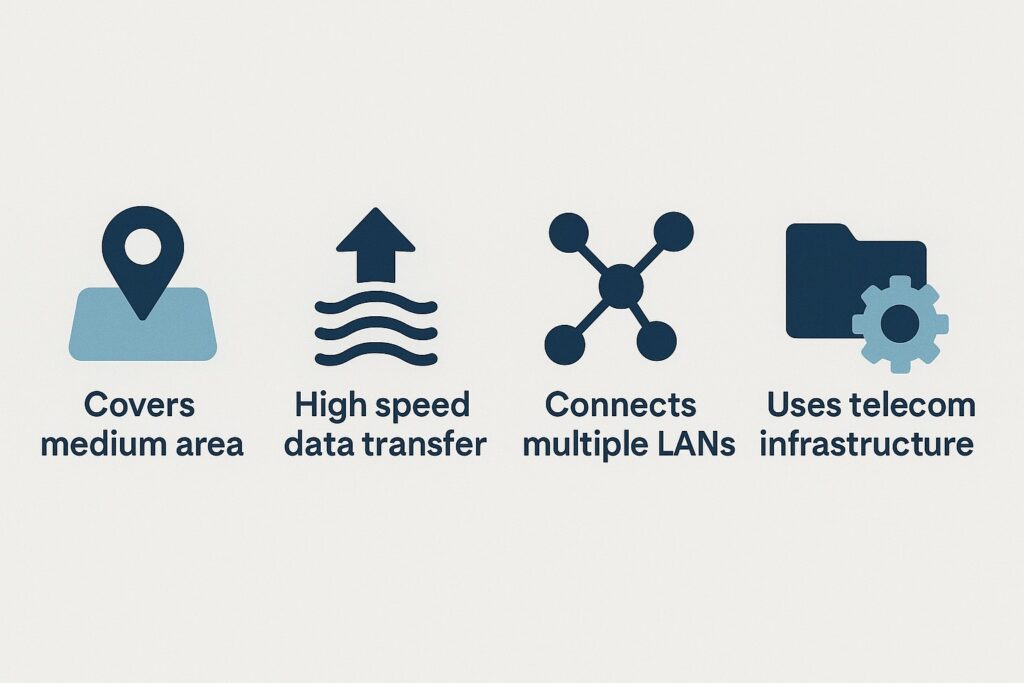
A Metropolitan Area Network (MAN) comes with some useful features that make it perfect for city-wide networking. Let’s take a look at what makes MAN different and special:
🔸 1. Covers Medium-Sized Area
MAN is designed to connect networks across a city or a group of nearby buildings. It covers a distance of about 5 to 50 kilometers, which makes it larger than LAN but smaller than WAN.
🔸 2. High-Speed Data Transfer
A MAN is built to support fast and smooth communication between connected locations. It uses technologies like fiber optic cables to provide high-speed internet and data sharing across the city.
🔸 3. Connects Multiple LANs
MAN acts like a bridge between different Local Area Networks (LANs). For example, if a company has offices in multiple buildings within the same city, MAN helps connect all these LANs to work as one big network.
🔸 4. Uses Telecom Infrastructure
Most MANs rely on the existing infrastructure of telephone companies or internet service providers (ISP). This includes fiber optics, routers, and switches which help manage large-scale communication smoothly.
🔸 5. Shared Resources
One of the best features of MAN is that it allows multiple users and locations to share important resources like files, applications, printers, and internet connections — saving cost and time.
Components of MAN (Metropolitan Area Network)
To build and run a Metropolitan Area Network (MAN), we need a few important hardware and infrastructure components. These tools work together to create a strong, fast, and secure city-wide network.
Let’s look at the main components of a MAN:
🔌 1. Routers
A router is a device that connects different networks and helps direct the data to the correct destination. In a MAN, routers connect LANs from different locations so that they can communicate with each other easily.
💡 2. Switches
Switches help manage and control the flow of data inside the network. They connect multiple devices within a LAN and help send data only to the correct device, improving speed and efficiency in a MAN setup.
🌐 3. Modems
Modems convert digital data into signals that can travel over telephone or fiber-optic lines. They are important when connecting MAN to the internet or other external networks.
🧵 4. Fiber Optic Cables
MANs usually use fiber optic cables for data transfer because they are very fast and reliable. These cables can send large amounts of data over long distances without losing speed or quality.
🏢 5. Network Service Providers
To run a MAN smoothly, many organizations rely on telecom or internet service providers (ISPs). These companies provide the infrastructure and maintenance support needed to keep the network running 24/7.
📡 6. Wireless Technologies (Optional)
In modern setups, wireless connections like Wi-Fi or microwave links can also be used in MANs — especially when laying physical cables is difficult.
Examples of MAN in Real Life
You might be wondering – where do we actually use MAN (Metropolitan Area Network) in real life? Well, you’ll be surprised to know that it’s all around us, especially in cities!
Here are some common and practical examples of how MAN is used:

🎓 1. City-Wide College or University Campuses
Large universities often have multiple campuses spread across a city. A MAN helps connect all their buildings — like libraries, labs, and hostels — so students and staff can access shared data, use online resources, and communicate easily.
🏢 2. Corporate Offices in a City
Big companies with multiple office branches in the same city use MAN to link their buildings together. This allows all employees to share files, work on cloud-based tools, and hold video conferences without delays.
🏛️ 3. Government Networks
Many government departments and public services (like police, hospitals, and transport offices) are connected through a MAN. This ensures fast and secure communication across the city and helps in better coordination during emergencies.
📺 4. Cable TV and Internet Providers
Cable TV networks and ISPs use MANs to deliver internet and television services to homes across cities. They use fiber optic cables and routers to connect their central servers with customer locations.
🏥 5. Hospitals and Healthcare Systems
Healthcare groups with multiple hospitals or clinics in a city use MAN to share patient data, reports, and appointment systems across their branches.
So next time you’re watching TV, attending a city college, or visiting a government office — remember, a MAN might be working behind the scenes to keep everything connected smoothly!
Use Cases of MAN (Metropolitan Area Network)
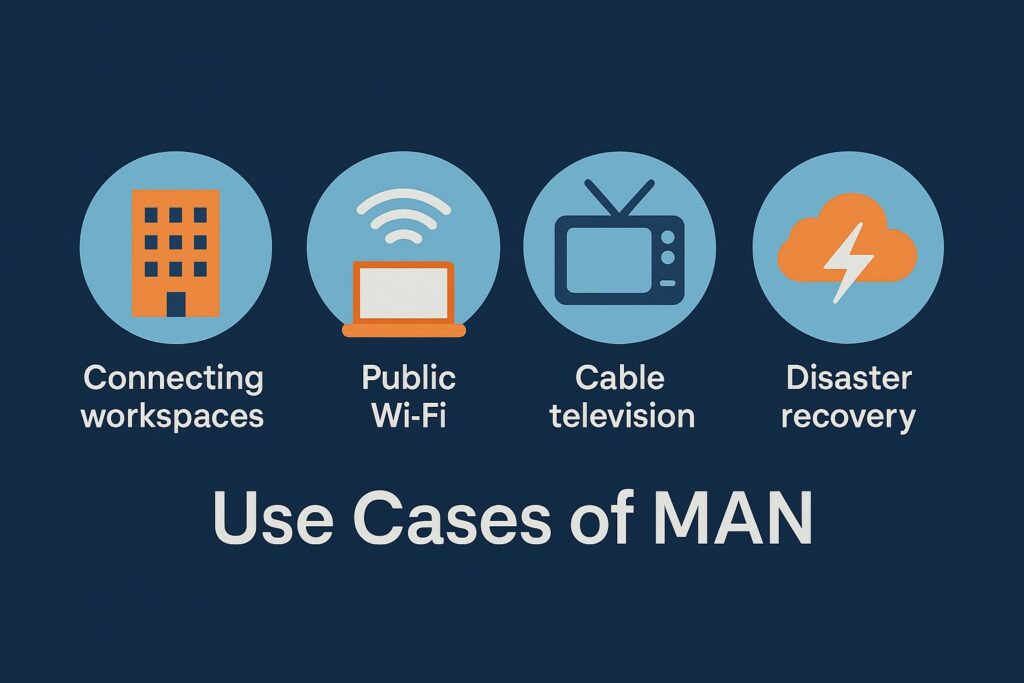
Here are some of the most common and practical uses of MAN in real life:
1. Educational Institutions
- Used by universities and colleges with multiple campuses in a city
- Connects libraries, classrooms, labs, and admin offices
- Enables students and staff to share data, use internal portals, and access study materials from any location
2. Government Services
- Helps connect different government departments like police, hospitals, and transport offices
- Supports fast communication and better coordination
- Useful in city-wide public service management and emergency handling
3. Hospitals and Healthcare Centers
- Connects hospitals and clinics located in different parts of a city
- Allows sharing of patient records, test reports, and appointment systems
- Ensures faster and better treatment services
4. Banks and Financial Institutions
- Links multiple bank branches in a city
- Used to share real-time customer data, transaction updates, and ATM operations
- Improves banking security and customer service
5. Public Wi-Fi and Internet Services
- Used by telecom companies and ISPs to provide city-wide internet coverage
- Powers public Wi-Fi in buses, parks, railway stations, and airports
- Offers reliable, high-speed internet to urban areas
6. Corporate Companies
- Connects various office buildings of a company within the same city
- Supports internal communication, file sharing, and video conferencing
- Helps teams work together from different locations easily
Conclusion: Why MAN Matters in Today’s Digital World
In today’s fast-moving digital world, staying connected is more important than ever — and that’s where MAN (Metropolitan Area Network) plays a powerful role. It acts as a bridge between small networks (LANs) and large global ones (WANs), making it perfect for connecting multiple buildings, offices, or institutions across a city.
Whether it’s a university sharing study material, a hospital accessing patient data, or a company running multiple branches, MAN ensures fast, reliable, and secure communication. It reduces costs, improves productivity, and helps organizations grow without limits.
Even though it may require a bigger setup and strong technical management, the benefits it brings — like speed, scalability, and efficiency — make it a smart investment for any city-based organization.
So, the next time you see smooth internet in public places or fast data sharing between city offices, remember — there might be a Metropolitan Area Network working quietly in the background to make it all possible.
You can read more about internet click here

